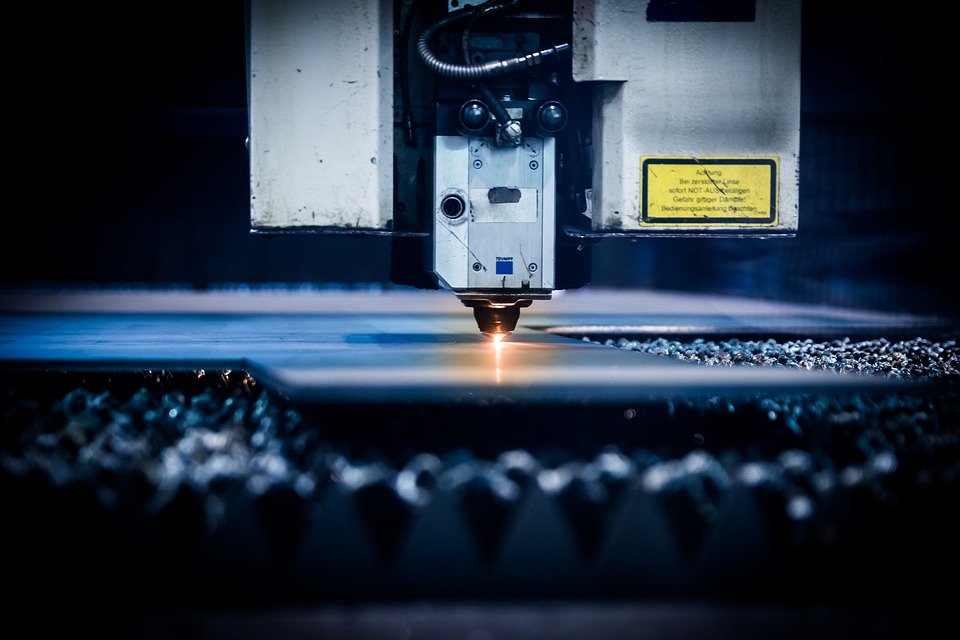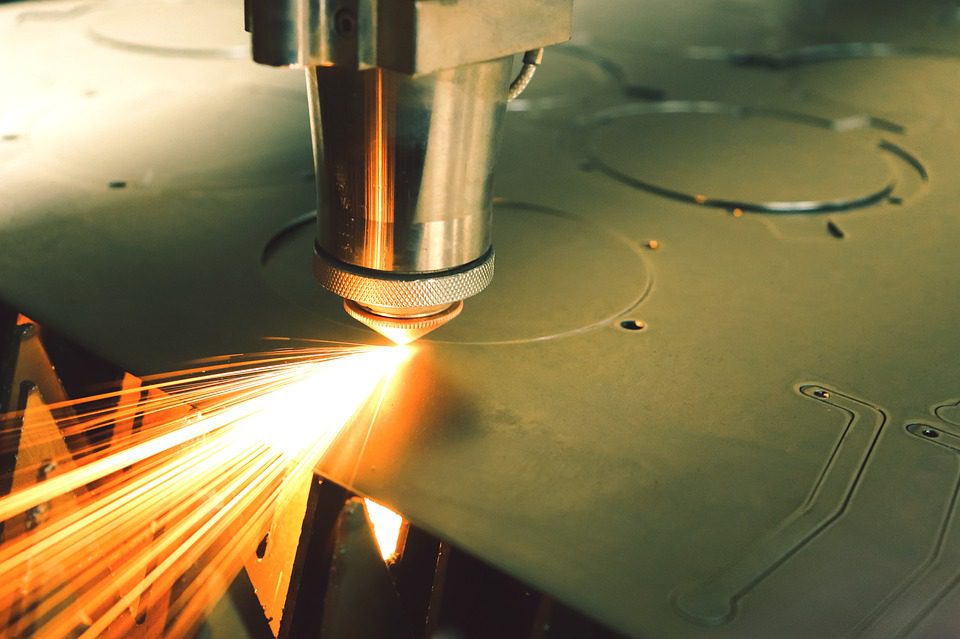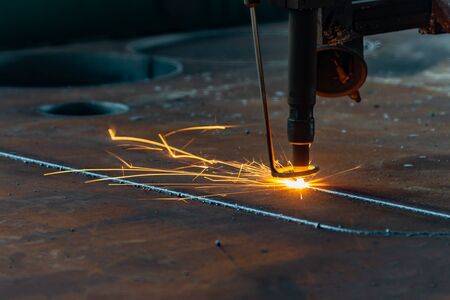Laser cutting is one of the most commonly used cutting techniques. There are several types of lasers, i.e. methods by which materials can be cut. Each method and every type of laser has its tolerances and precision, which depend on several parameters, among which the most important is the roughness and thickness of the material.You can learn about laser engraving machines for metals in this post and also you can find lot of useful info on the net.

Laser cutting is one of the most commonly used metal cutting techniques today. With speed, precision and good value for money, laser can cut stainless steel, aluminum, titanium, iron, steel and other metals that are used in the industry.
Stainless steel as the foundation of today’s industry
Stainless steel is an iron alloy containing at least 10.5% chromium, and its main feature is its durability and corrosion resistance, which is why it is used in the construction, surgery, auto industry, etc.
There are several types of stainless steel which can be divided into:
Ferritic Stainless Steel – This type of stainless steel contains from 13 to 17% chromium. This type of steel is very acid resistant, very soft, has magnet properties, but there is a problem of poor weldability.
Austenitic stainless steel – chromium content in this type of steel is from 15 to 20%. Its main characteristics are magnetism, more deformed during welding, plasticity and good characteristics at low temperatures.
Austenitic ferritic stainless steel – chromium content is from 22 to 24%. This type of steel is often used in mining, that is, the oil, petrochemical, and chemical industries.
Martensitic stainless steel – an inox that has an increased carbon content and its major application is in tool manufacturing.
Martrensitic stainless steel – such steels have very high strength. They are used to make parts that are in an environment where unclean air is present.
Aluminum and its importance to industry
Aluminum is the third most prevalent metal in the world, occurring in compounds with silicon, oxygen and sulfur. In the metal industry, aluminum is the most commonly used metal after steel. Today aluminum is used in the construction of various objects, i.e. parts. The reason for the overall application of this metal is its corrosion resistance, strength and low mass.

Properties of aluminum
Almost three times lighter than steel
Good stretchability and strength
Excellent low temperature properties
13 times higher thermal conductivity than stainless steel
It has no magnetic properties
It is well cultivated
Excellent resistance to external influences
Excellent electrical conductivity
Laser cutting of aluminum
Almost all metals have reflective properties, which is especially the case with the aluminum. The reflective property of aluminum can cause the cutting laser to be destroyed or damaged. Reflection is a property of metals, and of materials in general, that causes the beam (e.g. light) to bounce back toward the source, which in the case of laser cutting means the reflection of the laser beam into the optical parts of the laser cutting device. Due to the reflective property of aluminum, a layer of anti-reflection agent is applied to the aluminum prior to cutting. However, this is not enough because the reflection comes not only from the surface of the aluminum sheet but also from the molten aluminum, which is created as an inevitable cutting product.
For this reason, when cutting aluminum, it is necessary to adjust the cutting parameters, reducing the reflection to a minimum or eliminating it completely. Most laser cutters today have a system specifically designed for cutting aluminum, which monitors the cutting parameters and switches off the laser beam after possible critical reflection, thus preventing possible damage.

Types of laser cutters
CO2 laser cutter
The CO2 laser cutter is based on a mixture of electrically stimulated gases, which results in the creation of a laser beam. With a wavelength of 10.6 micrometers, the laser beam belongs to the group of infrared radiation, rendering it invisible to the eye. However, the parameters that develop when mixing gases make it possible to cut metals such as stainless steel, steel and aluminum. Laser metal cutting using a CO2 laser cutter is considered to be the most economical cutting technique. For this reason, this type of laser is the most popular on the market.
Nd: YAG, Nd: YVO (crystal laser)
This type of laser cutter is the most widely used in the automotive industry. Crystal laser cutters belong to the group of lasers that use solid media for cutting. Laser beam when cutting with this type of laser is created as a result of the interaction of the crystal carrier and the chemical element neodymium. Such an interaction produces a laser beam with a wavelength of 1.064 micrometers. The specificity of these types of laser cutters refers to the special type of diodes used to create a laser beam that must be replaced after a maximum of 15,000 laser hours.
Fiber laser cutters
Fiber laser cutters fall into the category of cutters that use a solid medium to cut, just as was the case with a crystal laser. The resulting laser beam is amplified through special diodes, similar to that of a crystal laser, to the power at which the cutting process can begin. The resulting laser beam has a wavelength of 1.064 micrometers. Unlike CO2 laser cutters, fiber lasers develop a beam intensity of up to 100 times stronger.

Laser cutting methods
Evaporative laser cutting
Evaporative laser cutting is a cutting at which the laser beam focuses on the material until the material is heated to the point where evaporation begins. The cutting material literally evaporates, widening the initial cutting hole and starting the cutting process. It is most commonly used for cutting plastic.
Laser cutting by melting
This type of laser cutting focuses the high intensity laser beam into the material, causing it to melt. Auxiliary gas that is used blows the melted material. This method is also the most used for cutting metal.

Laser cutting with thermal stress
Materials that are easily brittle after a number of heating cycles are susceptible to cracking. The laser beam therefore focuses on a small surface of the material that is heated, and when the firing process begins it is controlled by the movement of the laser beam.
Reactive laser cutting
Reactive laser cutting is also called flame cutting. This type of laser cutting is very similar to autogenously cutting. The difference is that instead of gases used in autogenously cutting, for cutting is used a laser beam. This cutting is most often used for thin steel plates of 1 mm thickness.
Laser Cutting Tolerances
Today’s laser technology enables laser cutting with a precision positioning of the laser head of 10 micrometers and repeatability of the same positioning tolerance of 5 micrometers. The precision of laser cutting is influenced by many parameters, the most important is the roughness and thickness of the cutting board. The laser cut can be achieved with a tolerance of 0.025 mm, which depends on the wear of the machine parts of the laser cutter.